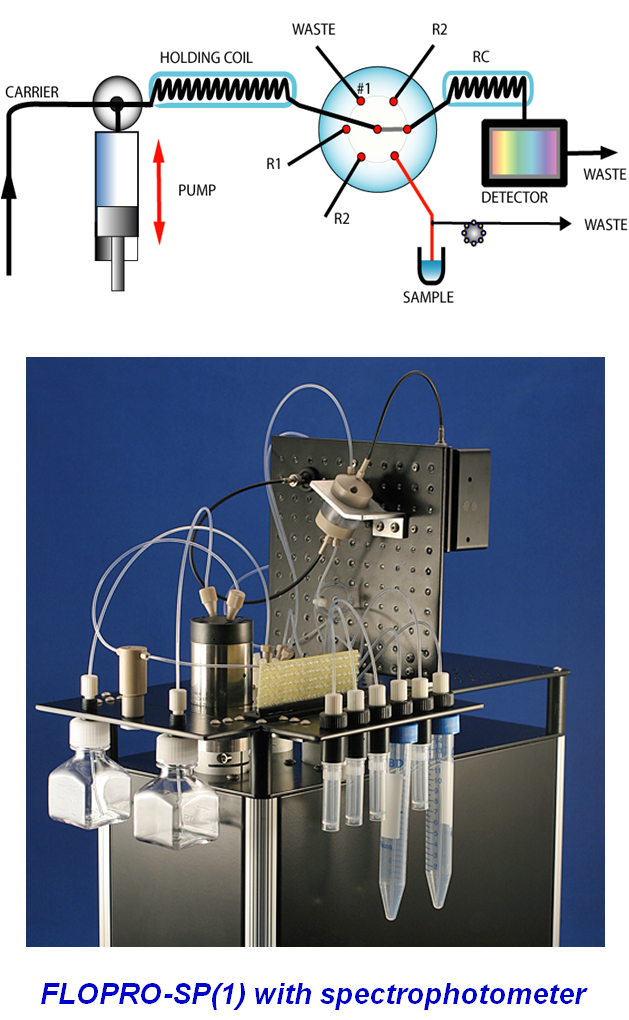A Conventional SI system comprises a bi-directional syringe pump, holding coil, conventional multiposition valve, reactor coil (RC) and detector (Ruzicka & Marshall 1990). With a six position valve, up to three reagents (R1,R2,R3) can be used. The high resolution stepper motor driven syringe pump is, along with a multiposition valve, controlled by computer and dedicated software. Flow programming along with random access to sample and reagent solutions, provided by a multiposition valve yield unprecedented versatility since all parameters – sample injection, solute dispersion and timing are controlled by software without the need for physical reconfiguration of the system. The conventional design dominated the SI technique (Lenehan 2002) until the trend towards miniaturization led to development of microSI-Lab-on-valve format. The drawbacks of conventional design compared to microSI are larger internal volume and the necessity to flush dead volume of the sampling line (SL) between subsequent injections.
J. Ruzicka & G. D. Marshall, Anal. Chim. Acta, 237, 239 (1990)
Lenehan.C.E., Barnett N.W., Lewis S.W. Analyst 127, 997, (2002)
The Conventional SI System
2.3.2.










